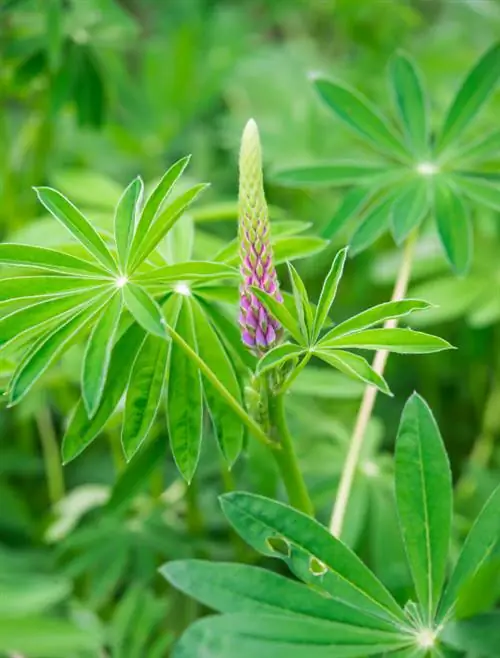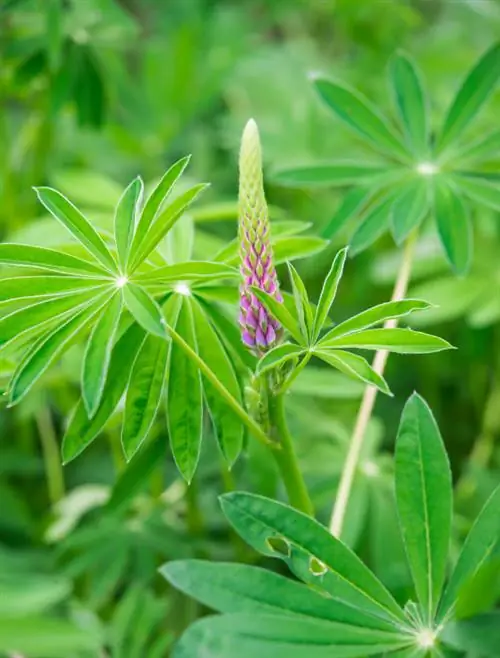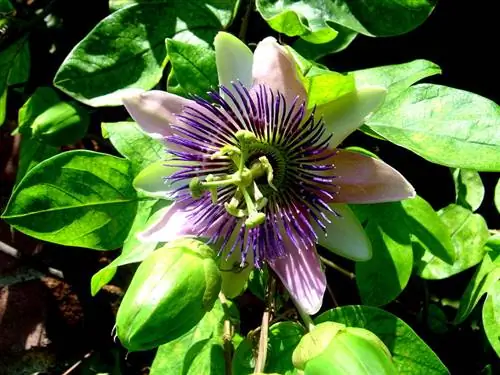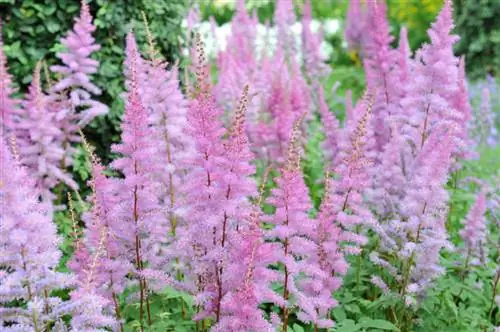- Author admin [email protected].
- Public 2023-12-16 16:46.
- Last modified 2025-01-23 11:20.
Lupins (botanical name Lupinus), also called wolf beans or fig beans, belong to the butterfly flowering family, just like peas and beans. Unlike these, the hardy and very robust perennials are kept in the garden as ornamental plants for several years.

Are lupins perennial garden plants?
Lupins are perennial, hardy shrubs that are valued in the garden for their beautiful flower spikes. They are easy to care for, self-sufficient and resistant to pests and diseases, meaning they will provide years of enjoyment.
Perennial perennial with little care requirements
Hardly any ornamental perennial in the garden is as easy to care for as the ornamental lupine. The perennial plant is
- hardy
- Easy care
- Self-catering
- Resistant to pests and diseases
Once lupins have settled in the garden, they reliably appear again every spring. For several years they delight the gardener with beautiful flower spikes from May to August.
The plant hardly needs any care. It grows roots so long that older lupins don't even need to be watered. Fertilizing the soil is also unnecessary because the lupins themselves provide new nutrients.
Hardy perennials in the garden and on the terrace
Before winter you can cut lupins back to the ground. However, this is not really necessary. However, by cutting off spent flowers you can often bring about a second period of flowering in early autumn.
Lupins are very robust. They can easily tolerate temperatures of minus 25 degrees. Winter protection is not necessary outdoors.
Even if the lupine grows in a pot, it provides color on the terrace and balcony for several years. It just needs a little more care. It must also be supplied with water and should be given winter protection in winter.
Lupins as green manure
The situation is different with lupins, which are sown as green manure in the garden. They are intended exclusively for quickly forming a lot of leaf and root mass.
They are usually cut and buried in the same year, but at the latest next spring.
Through their long roots, they loosen the soil and supply it with nitrogen. The buried leaf mass also increases the nutrient content of the soil.
Tips & Tricks
Lupins sow themselves. The ripe pods pop open and spread the seeds within a radius of seven meters. To prevent the entire garden from being littered with lupins, you need to cut inflorescences as soon as they fade.






